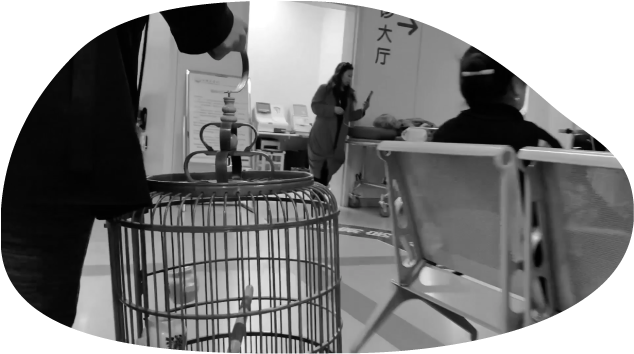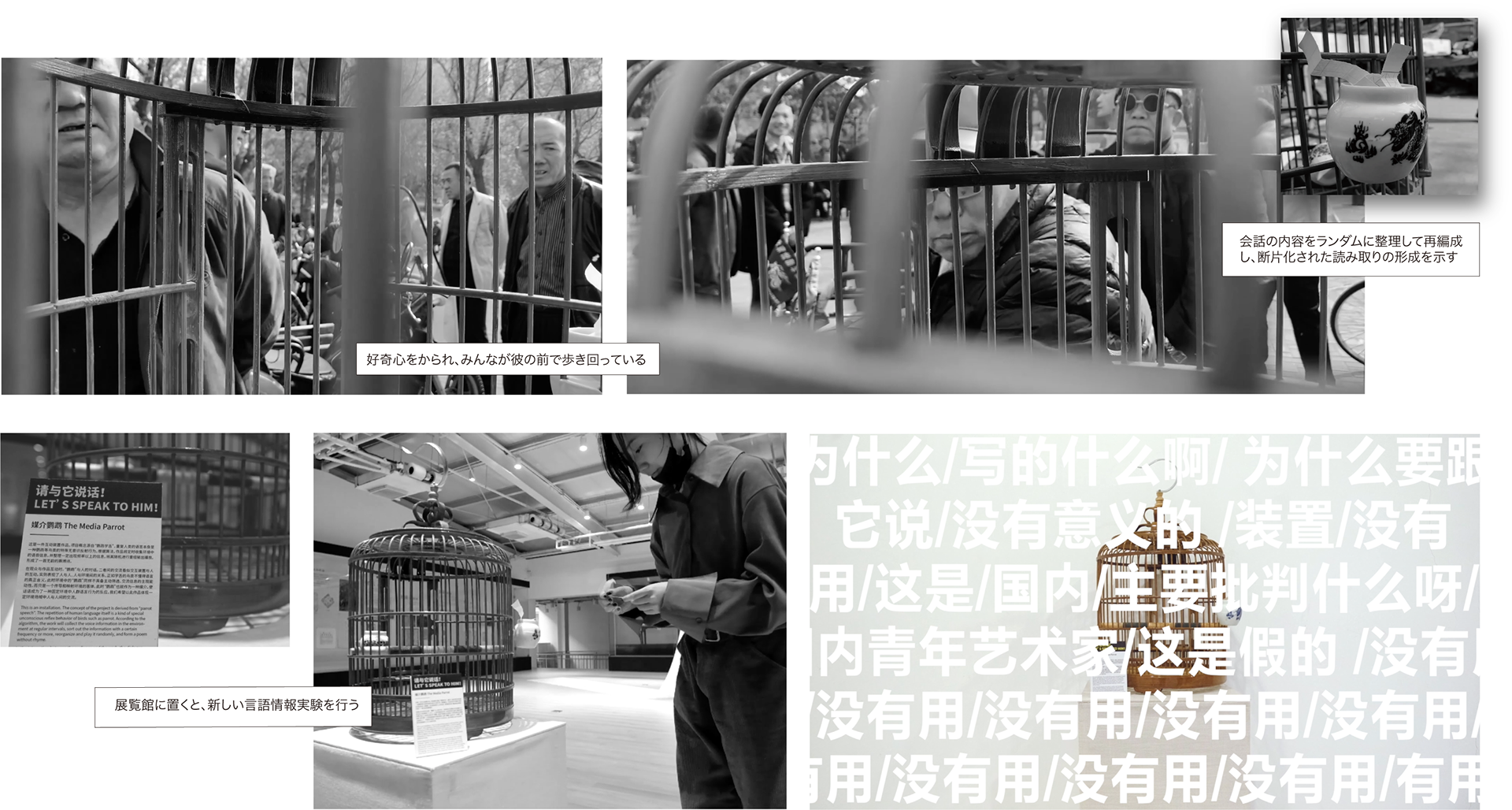媒介オウムは、現代のデジタルメディアの断片化された情報受信特性を反映しています。八百屋や急病診療所、公園などの騒がしい環境を選んで、人々の会話を収集します。これは、情報時代における爆発的な情報を象徴しています。そして、会話の内容をランダムに整理して再編成し、断片化された読み取りの形成を示しました。
Mediated parrots reflect the fragmented information reception characteristics of modern digital media. They choose noisy environments such as grocery stores, urgent care clinics, and parks to collect people's conversations. This symbolizes the explosion of information in the information age. The conversations were then randomly organized and reorganized to show the formation of fragmented readings.




中国で、「オウムの口まね」と言う諺があります。オウムは人が言ったことの受け売りをすると言う意味です。中国人は鳥かごを提げて賑やかな所に連れて行って、鳥が人ごみを慣れるようにする伝統があります。 ですから、私は中国の伝統的な鳥かごを選びました。
オウムは会話を作ることができなくて、ただ情報をそのまま伝達する媒介です。
There is a Chinese proverb called "parrots learn to speak", which means that parrots imitate human speech. In China, people still have the tradition of walking the birds, bringing them to a crowded place so that they can adapt to the crowded environment around them. Therefore, I chose to use the traditional Chinese bird cage shape. However, parrots do not "speak", but are only intermediaries between the input and output of statements, playing the role of transmitting information. Parrots are not capable of creating a conversation, they are just a medium to transmit information as it is.
置ける場所: 人々がたくさんおしゃべり場所で人の会話内容のサンプリングを行います。騒がしくて情報量が多過ぎ流嫌いがあり、集めた会話内容は違って、鮮明な特徴もあります。


他人に知ってもらいたいことだけを言う、話題の焦点を変える、意図的に事実を誤魔化しますなど現実における、オウム機械の機能をデザインします。情報それはポスト・トゥルース時代一つの特徴を表します。
